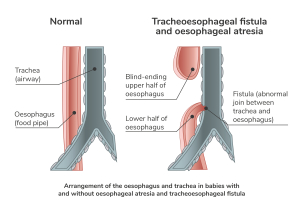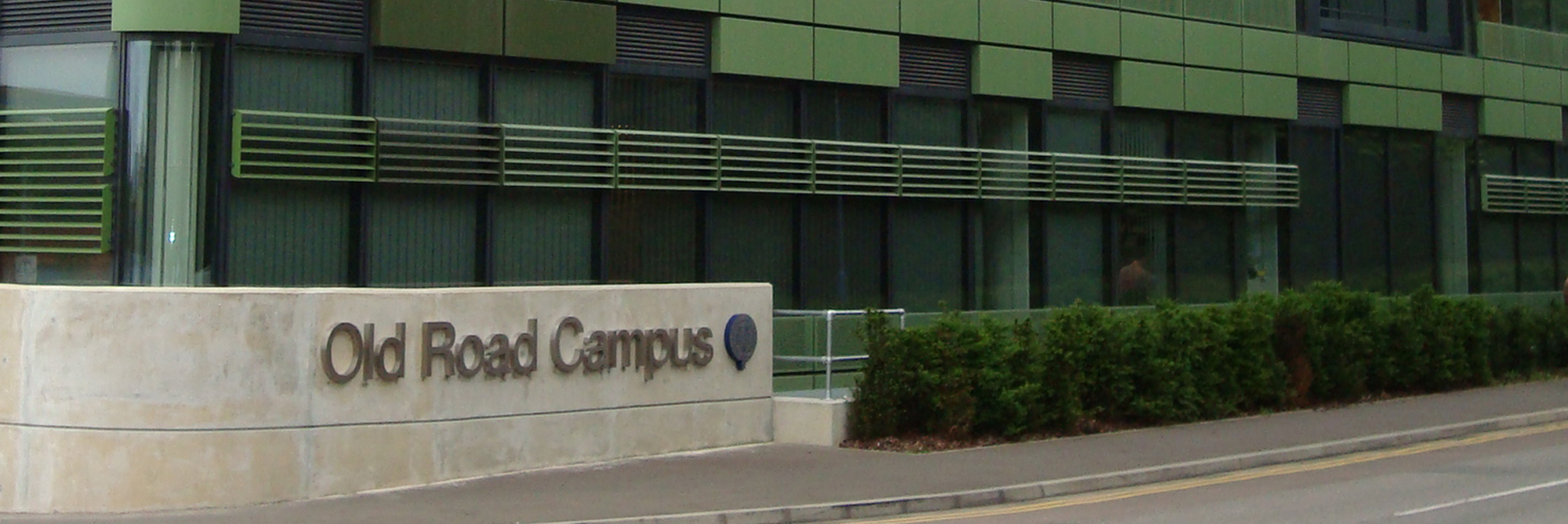Oesophageal Atresia
Oesophageal atresia is a condition where the child's oesophagus (food pipe) does not develop properly. It affects about 100 children in the UK each year. There are five different types of oesophageal atresia, but in most of them, the oesophagus develops as two 'blind-ending' pouches as opposed to one long tube, meaning that there is no connection between the child's mouth and their stomach. In some cases, there can also be a connection between the oesophagus and the trachea (the windpipe), which is known as a tracheoesophageal fistula. Children with oesophageal atresia will need an operation in the first few days of life to remove any connection between the oesophagus and the trachea, and to join the two pouches of the oesophagus together. Babies with oesophageal atresia will often have other problems as well, including problems with the spine, heart, bottom, kidneys and limbs.

Description of Diagram
Normally the oesophagus (food pipe) forms one continuous pipe from the mouth to the stomach. The Trachea (main airway) is a separate pipe that runs from the back of the mouth to the lungs. In oesophageal atresia, instead of the oesophagus forming one continuous pipe, it is split in half, with a blind ending upper part connected to the mouth, and then a separate lower part connecting to the stomach. In the most common form of oesophageal atresia there is also a connection between the lower half of the oesophagus and the trachea. This is called a tracheoesophageal fistula.
More information about oesophageal atresia can be found on the NHS website
The following sources of information and support are also available:
TOFS - a support group for parents of children born with oesophageal atresia
EAT - The Federation of Esophageal Atresia and Tracheo-Esophageal Fistula Support Groups

